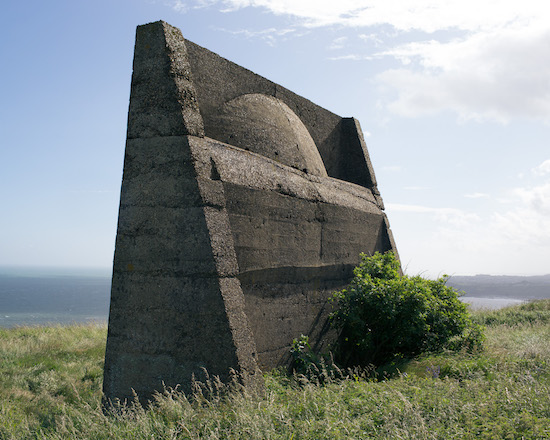Just over eighty years ago and shortly after Nazi Germany’s airborne military division, the Luftwaffe, was formed, panic had set in across Europe and Britain to protect itself from potential air warfare. Britain had been experimenting with aircraft detection equipment ever since the Zeppelin raids of the First World War, and the project that had progressed the furthest in the inter-war years was William Tucker’s Sound Mirrors.
These vast and abstract concrete structures, shaped like satellites and turned up to the skies as if they were searching for extraterrestrial life, were erected on areas of the coast that were thought to be key locations in any future air defence plan. A man sitting in a trench beneath with headphones could, by positioning a microphone accurately, use the mirrors (also known as listening ears) to amplify the sound of a plane’s engine up to 20 miles away. It was fortunate for Britain that the technology could not match the range or the clarity of radar that was being developed simultaneously, and the mirrors’ inefficiency and oversensitivity led them to be scrapped just a few years after they were installed, and before the Second World War had begun.
Its folly was even further sullied by Tucker’s unwavering belief in the project and unwillingness to listen to criticism, despite its failures. He blamed most of the failed experiments on weather conditions or on the operators’ training. In short, he was a scientist practicing unscientific methods, perhaps aware of his legacy or perhaps blinded by the determination to serve his country. The mirrors’ fruitlessness may be forgiven if only because of the uncanny impression one gets that they were built for a future not yet seen or understood. Indeed, its second life as a monument and relic has been more enduring than its first.
I was interested in visiting the sound mirrors on the Kent coast for a few reasons. Notably, why would such a failure of British science and engineering, at a time where failure was fatal, be venerated so as to become a monument to itself? And secondly, with a renaissance in the appreciation of Brutalist architecture well under way, I wanted to look again at the many concrete coastal structures along our southern coast and see for myself how something so utilitarian could be so aesthetically sublime.
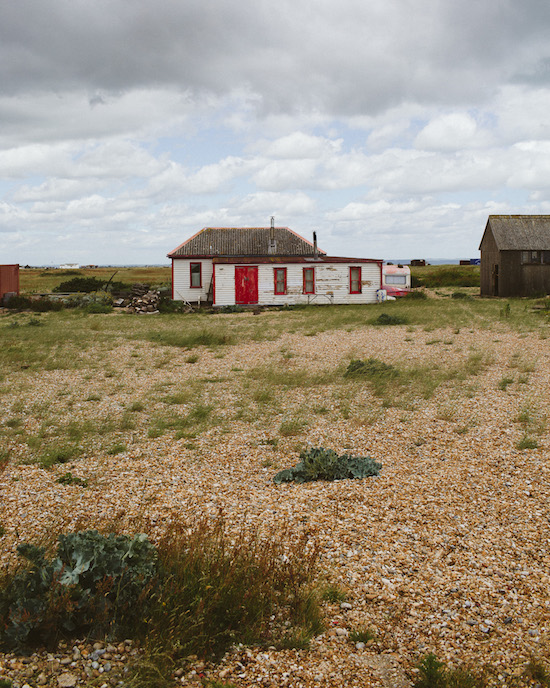
It seemed appropriate to start in the shingle desert of Dungeness, which is the very likeness of desuetude, and work up the coast to Folkestone where at Abbot’s Cliff, probably the best kept example of a sound mirror still stands.
At Dungeness, in the shadow of one decommissioned, and another soon-to-be decommissioned, nuclear power station, is a hollow landscape of dunes and vegetated shingle. It is sparsely populated by detached cabins, cottages and fisherman’s huts, some lived-in, some abandoned. There is a desperate feeling of chronic emptiness but yet its decay is intentional. The conservation plan for the area demands nature to prosper, leaving boats, huts and machinery stranded in no-go zones like the contaminated aftermath of an apocalypse.
On the coastal walk from Dungeness to Denge, via a caravan holiday park, I wondered whether the mirrors and other abandoned concrete structures’ would still be here if they weren’t so imposing and aesthetically pleasing. Immediately after their abandonment there were plans to destroy them but what with the war and the need to focus on more important things they were left to the weather. As time went by, became fascinated with their history and their eeriness, and they have instead been protected and preserved by councils and heritage trusts.
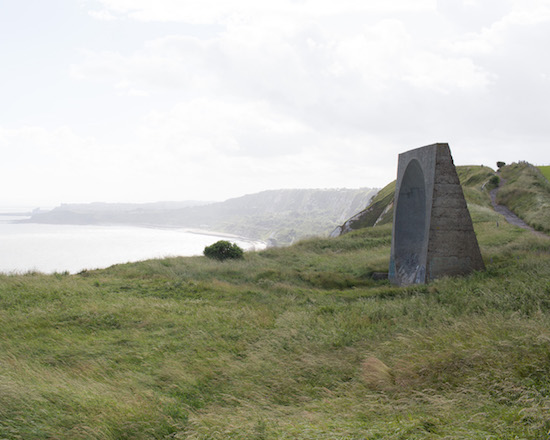
“Interpretation is not the maker’s task.” Jonathan Meades said this of a building when first erected, but it becomes even more apparent when a structure is reappropriated or adapted to modern needs. Functionalist architecture is built in mind of the task at hand, but what industry, technology or occupation remain the same? And what can an architect or inventor do to guard against its design soon becoming obsolete?
Three new books about Brutalist architecture, Raw Concrete (Barnabas Calder), This Brutal World (Peter Chadwick), and Concrete Concept (Christopher Beanland) have one thing in common: They all provide a subjective guide to Brutalism, they are compendiums of their favourite buildings chosen because of their own particular experiences within them. That may appear to be a criticism but it isn’t, it’s the recognition that the books are a micro-version of how architectural appreciation operates. Style is a subjective and trendy notion that goes in and out of fashion, and as such all taste is an emotional phenomenon. Unless we accept a future where temporariness is the norm, these books make us see clearly that the survival of a building or structure is related to its potential for universality. When a building is being constructed, should we ask: Will this style likely be relevant in half a century?
It’s an unanswerable question and perhaps more realistically we could ask whether one architectural style is more universal than another? With the demolition of Brutalist-designed housing estates, libraries, shopping malls and car parks across the country it would appear so. So many architecturally-sound and, arguably, elegant buildings have been destroyed because of our emotional connections with them. Earlier this year, David Cameron, when talking about a regeneration scheme to demolish ‘sink estates’ said that in the worst estates you will be confronted with “concrete slabs dropped from on high” and “brutal high-rise towers”. This belief echoes the greater public perception where ‘brutal’ stands for deprivation, and concrete symbolises broken dreams. Due to that sticky symbolism it’s now our concrete that’s broken and cracked.
The three mirrors in Denge, one of which is a 200-foot amphitheatre, are protected and concealed from human contact. To get to the island that they stand on you either need the key to the padlocked swing bridge, or be a good swimmer. The magnitude of the three mirrors, the peculiar acoustics and the desolation that surrounds them gives off a similar jaw-dropping impression of being in a vast cathedral, or as Calder writes of unappreciated buildings: “The fact that these lost gems are hidden only by the blindness of their viewers gives an even greater sense of privilege than having been a rare visitor to an inaccessible Mayan temple.”
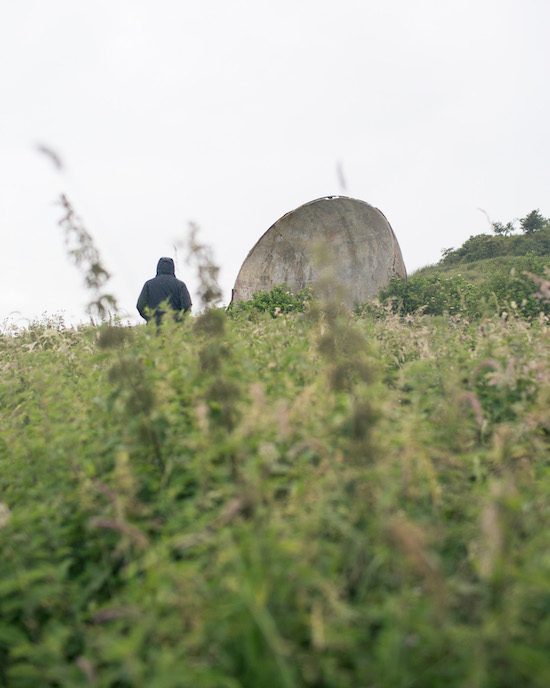
Above the town of Hythe is a sound mirror that stands forgotten, to get close to it you must wade through the three-feet high weeds and nettles on the Kent Downs to find its exposed steel frame and graffiti-daubed concrete. Of all the mirrors on the south coast this one with its gradual ruination and the lack of a sign to declare its history is the most fitting representation of the mirrors’ peculiar mystique and the failure of the project. But transformation should not be denied. In Folkestone, set upon a cliff a mirror appears incongruous and monolithic, thrusting outwards like the antennae or ear of a beast, and perhaps even more incongruous is how well kept this mirror is, as if its metastasis from practical device to sculptural obelisk is complete.
Can a structure shed its skin? And if architecture is made or commissioned by a despot, does the building by proxy share its values? It’s these questions that we see European countries struggling to answer in debates surrounding the preservation of another coastal structure, the Atlantic Wall, which was constructed in chunks from Nazi-occupied southern France to northern Norway. While some of it remains, many regions decided to demolish the wall to erase these emblems of wickedness. In other instances countries have more easily reappropriated its buildings, and for Rome in particular the architecture of Mussolini is enjoyed for the aesthetic itself. Especially the Foro Italico, formerly Foro Mussolini, which held the Olympics just 15 years after the Second World War ended, and still hosts events today.
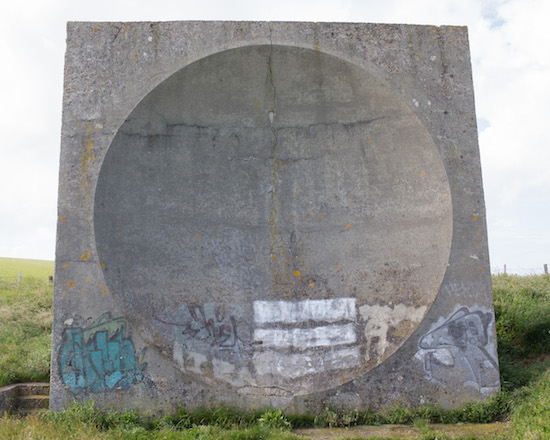
Calder writes that “it is such an addictive excitement to discover beauty and depth in things which others instinctively dismiss.” But for brutalism, fortunately, that time has gone. A time of revival in public and critical interest in Brutalism means, slowly, more grade listings of concrete buildings and a deserved appreciation of the form that for so long has been tangled with the embarrassment of our abominable histories. Beanland, Calder and Chadwick and their fellow cult followers of the architecture have given it its ‘coming out’ moment, as if Brutalism was a taboo subject finally made acceptable.
A taste or an appreciation of a style should be arrived at intentionally, not because it is fashionable to do so. My hope for the future of our Brutalist buildings and concrete structures is that the current interest in them encourages people to visit. By spending enough time around something you become emotionally invested, it’s this that will change our pejorative associations with its style. As for the mirrors, it’s time they left their history behind and are celebrated for their artistry and their contradiction to their environment. Tacita Dean represented them obliquely in her short film ‘Sound Mirrors’ as did Disinformation before her in their film ‘Blackout’. They are no longer a failed technology, they are art.
Christo Hall is a London-based writer and editor

